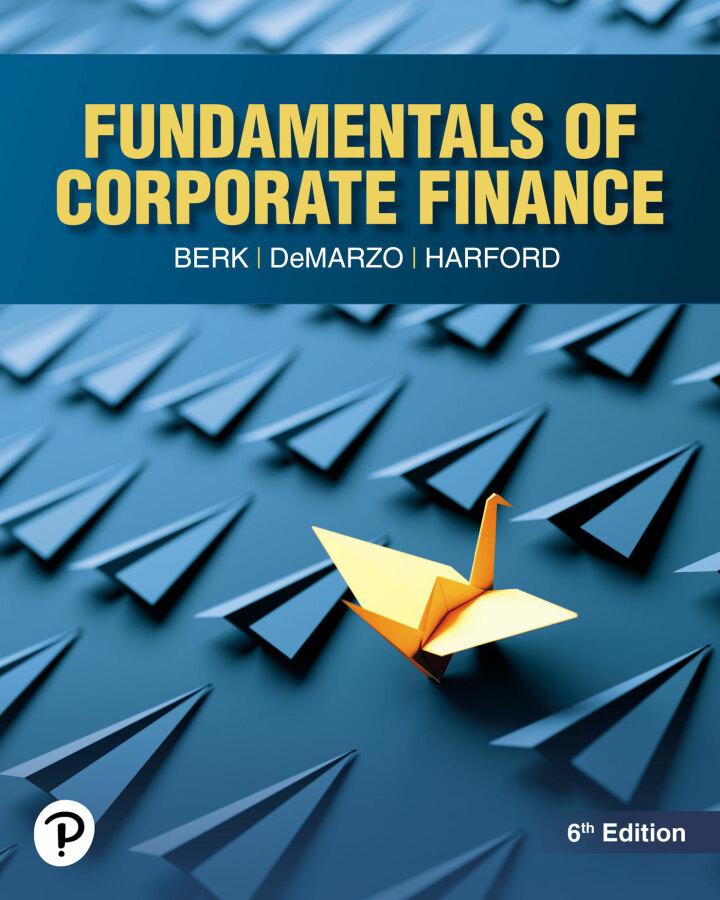You work in Walt Disney Companys corporate finance and treasury department and have been assigned to the
Question:
You work in Walt Disney Company’s corporate finance and treasury department and have been assigned to the team estimating Disney’s WACC. You must estimate this WACC in preparation for a team meeting later today. You quickly realize that the information you need is readily available online
1.Find the yield to maturity for 10-year Treasury bonds online. Collect this number as your risk-free rate. One place to get it is finance.yahoo.com, using the ticker symbol “^TNX”.
2.Using an online financial Web site like finance.yahoo.com, look up Walt Disney Company (ticker symbol: DIS). Collect Disney’s market capitalization (its total market value of equity), enterprise value (market value equity + net debt ), cash, and beta.
The beta is typically listed as part of the quote or as a key statistic for the company.
You will find cash and book debt (for calculation of net debt) on its most recent balance sheet, typically listed under “Financials.”
3. Next, estimate Disney’s cost of debt. Assume that Disney’s policy is to use the expected return on noncallable 10-year obligations as its cost of debt. Go to FINRA market’s bond center, and search for Disney’s outstanding bonds based on ticker symbol (DIS) in the Corporate Bonds section. A list of Disney’s outstanding bond issues will appear.
Find the non-callable bond issue that is at least 10 years from maturity.
You may have to choose a bond issued by one of its subsidiaries, like ABC. Find the yield to maturity for your chosen bond issue (it is in the column titled “Yield”) and enter that yield as your pretax cost of debt into your spreadsheet.
4. You now need to know the market value of Disney’s outstanding debt. Because obtaining market values of debt is difficult, practitioners often just use the book value of debt as an approximation for the market value. We will follow that precedent here. Obtain the total book value of short- and long-term debt from Disney’s latest balance sheet.
5. Compute the weights for Disney’s equity and debt based on the market value of equity and Disney’s book value of debt, computed in Step 4.
6. Calculate Disney’s cost of equity capital using the CAPM, the risk-free rate you collected in step 1, and a market risk premium of 5%.
7. Assuming that Disney has a tax rate of 20%, calculate its effective cost of debt capital.
8. Calculate Disney’s WACC.
9. Calculate Disney’s net debt by subtracting its cash (collected in step 2) from its debt.
Recalculate the weights for the WACC using the market value of equity, net debt, and enterprise value. Recalculate Disney’s WACC using the weights based on the net debt.
How much does it change?
10. Because you are worried about using the book value of debt rather than the market value, you decide to do a sensitivity analysis. Re-estimate Disney’s WACC by assuming that the market value of debt is 20% higher and lower than the book value.
11. How confident are you of your estimate? What implicit assumptions did you make during your data collection efforts?
Step by Step Answer:

Fundamentals Of Corporate Finance
ISBN: 9780137852581
6th Edition
Authors: Jonathan Berk, Peter DeMarzo, Jarrad Harford





